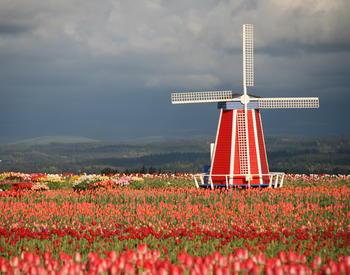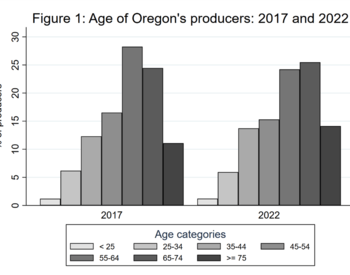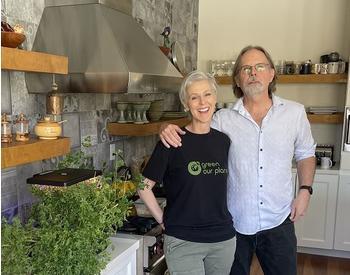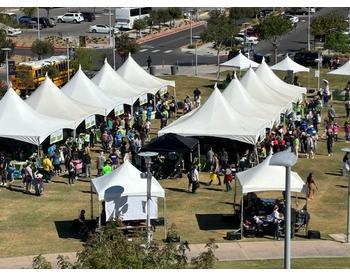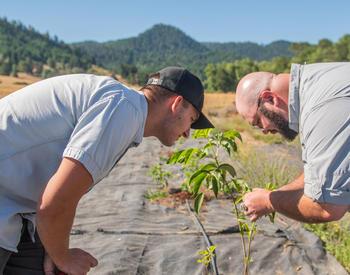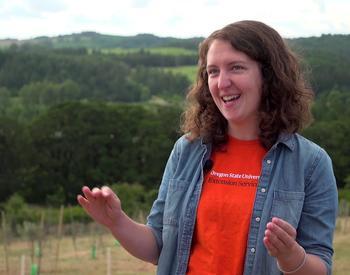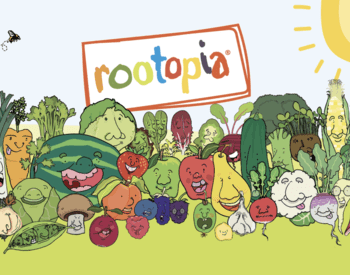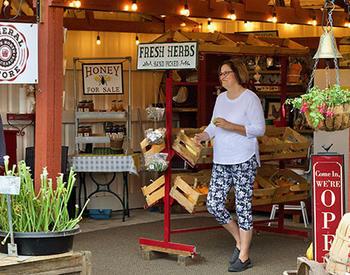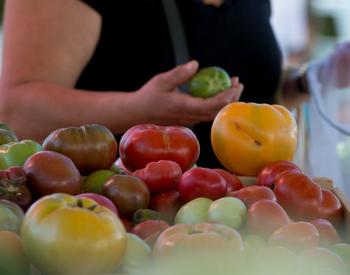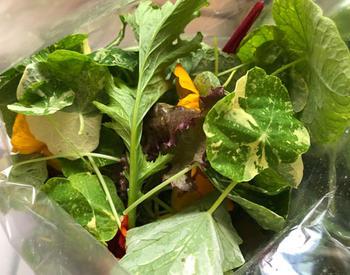DALLAS, Ore. – Oregon State University Extension Service is partnering with the Polk County Tourism Alliance to launch a food trail that will connect restaurants, recreational venues, wineries, breweries and working farms under the umbrella of Polk County attractions.
The Great Oaks Food Trail will launch this summer, however the activities offered and business hours may vary depending on Oregon’s orders related to restaurants and public gatherings during the COVID-19 pandemic, said Alisha Atha, office manager for Polk County Extension who is serving as local liaison for the trail.
“It has been a really fun experience and a great opportunity to get to know some of the businesses involved and the members of the Polk County Tourism Alliance,” Atha said.
The trail will include more than three dozen visitor stops, providing participants a taste of the county’s diverse attractions, while serving other purposes, as well.
The inception of the Great Oaks Food Trail dates to 2018 when the Polk County Tourism Alliance, a group of government, nonprofit and tourism-oriented business, first entertained the idea of connecting agritourism, recreation and food and beverage operations in Polk County. The alliance worked closely with Travel Oregon and Travel Salem and other organizations to bring the trail to fruition.
“The thought is that these businesses offer an eclectic mix of culinary and hands-on agricultural experiences that people are interested in experiencing,” Atha said.
“The idea is we have this great community, and it is worth coming here to experience it,” said Audrey Comerford, OSU Extension’s agritourism coordinator for Polk, Marion and Yamhill counites.
“It is great for Extension,” Comerford said. “Extension has always been a part of the community, but now I feel like we are partnering with the community in a new way. This is just one more thing we are doing to support the community of Polk County.”
Under a formula used by other Oregon food trails, the tourism alliance invited local farms, business owners, city officials and others to an organizational meeting last fall.
It quickly became apparent the idea had merit.
“We have had enthusiastic participation from the start,” Atha said.
Participating businesses must meet certain criteria. In the case of restaurants, for example, they must source 25 percent of their food locally, which is defined as within 100 miles. Wineries and breweries must source 50 percent of their ingredients locally.
Participating businesses are provided signage, free advertising on social media and instruction on how to get the most out of a food trail. Also, their business information is included in a brochure, which includes a food-trail map, that is distributed at travel-entry points and at participating businesses.
When launched, the Great Oaks Food Trail will be the fifth member of the Oregon Food Trail Program, joining the South Willamette Valley Food Trail, the East Gorge Food Trail, Wild Rivers Coast Trail and the Great Umpqua Food Trail.
According to Comerford, who worked in agritourism prior to joining Polk County Extension last fall, farm loops are an excellent means to draw customers to a farm and educate an urban audience that is often three and four generations removed from agriculture.
“The educational component is extremely important,” Comerford said. “Less than 2 percent of the population is now directly connected to the farming community, so anything the farming community can do to enlighten them on what they do and why they do it is beneficial for the image of agriculture.”
Often, Comerford said, a farm may be surprised to learn how interested the general public is in what they do.
“You may not think that your operation is worthy of a tour,” she said, “but really, there are so many things that are interesting to the general public.”
And the additional revenue stream can be invaluable.
“In many cases, the prices just aren’t there for the farmers, so one of the options is to sell direct to the consumer, whether at an event, or a farm stand, or at a farmers’ market, or as part of a food trail,” Comerford said.
The educational component can extend even to participating restaurants, Comerford said.
“More and more, people are looking for that local, authentic experience, connecting the person who prepares the food to the farmer who grew it, and this kind of gives you that whole spectrum,” she said. “Also, you are learning what a seasonal menu is, that it does change because it is not just coming off a truck from all over the place. It changes because the seasons change.”
Participating operations fall into one of six different categories: restaurants, artisan products, craft beverages, farm and forage, lodging, and recreation. Several of the operations cross over categories, Comerford said. Rogue Farms in Independence, for example, is a working hop farm that also includes a tasting room that sells food and beverages. Salt Creek Cider House in Dallas includes a working orchard, a cider-making operation and a tasting room.
Several of the wineries on the tour, listed under craft beverages, bring more to the table than wine tasting. Left Coast Estate in Rickreall, for example, offers vineyard tours. Bjornson Vineyard, in the Eola-Amity Hills outside of Salem, has a hiking trail complete with a waterfall that visitors can experience over a picnic lunch.
Among recreational sites on the Great Oaks Food Trail is Baskett Slough Wildlife Refuge. A dairy, Double J Jerseys in Monmouth, is included under farms.
In all, nearly 40 businesses have signed up to participate. Others have expressed interest, Atha said, but didn’t believe they were ready to participate this year.
Ultimately, Atha said the trail could handle as many as 50 stops.
A side benefit Atha and Comerford are seeing from the Great Oaks Food Trail is a camaraderie being developed among the participating businesses, and new connections being made.
“That is another big component of this,” Atha said. “It is creating a community of these businesses that can partner with one another. It is helping connect our local farms with local businesses that in many cases are using the products they produce.”
Susan Richman of Belle Mare Farm in Willamina, which is among a handful of farms outside of Polk County participating in the trail, said, “The food trail is a fantastic idea, not only for tourism, but also to create awareness around our food production.”
“I’m pretty excited about it,” said Shawn Irvine, economic development director for the city of Independence, who was one of the first to see the potential for a Polk County food trail. “I think there are some great possibilities.”
A version of this story originally appeared in Cultivating, a quarterly publication of OSU Extension and the Polk Soil and Water Conservation District.
